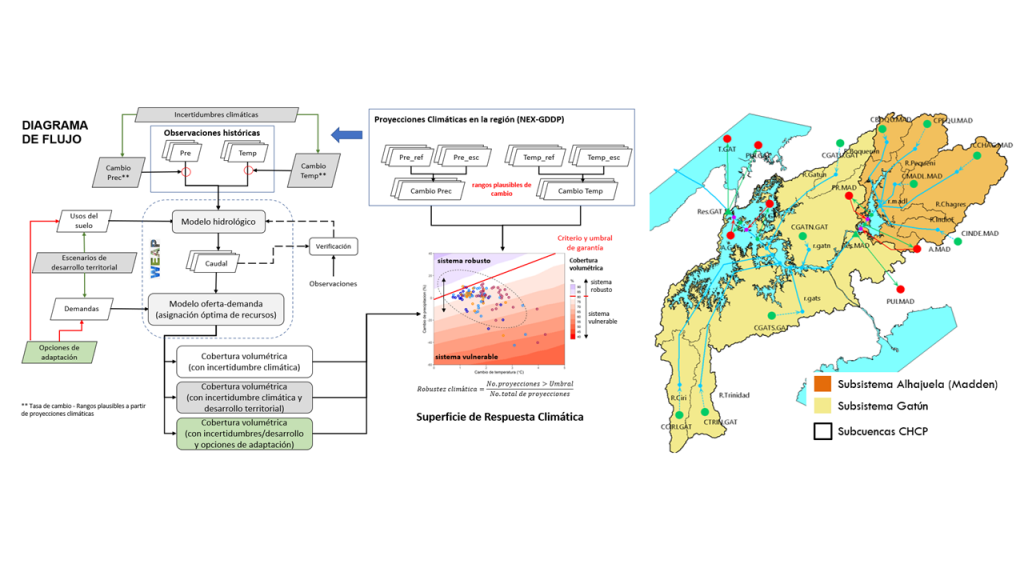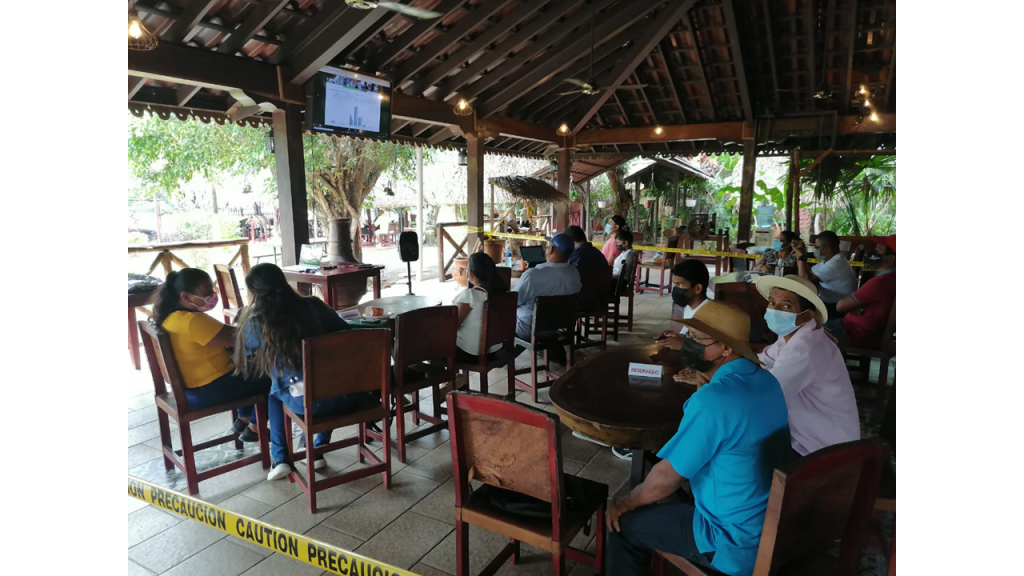FutureWater and IDOM have delivered the final report titled “Prognosis: Trends and Scenarios” developed in project “Indicative Land Use Plan for (PIOTA) for the Panama Canal Basin (PCB)”. The PIOTA-CHCP project, which is led by the Panama Canal Authority (ACP) and funded by the Inter-American Development Bank (IDB), aims to produce the necessary strategic guidelines necessary to achieve sustainable and climate-robust territorial and socio-economic development in the river basin.
The report recently delivered to the ACP includes a detailed analysis on how water security in the basin can be affected by a plausible range of socio-economic development, land use changes and climate change trajectories which have been envisioned and projected for the region. Also, a wide range of adaptation options and policies were assessed which can reduce the vulnerabilities around climate change. For this purpose, a Robust Decision Making Methodology (RDM) has been adopted that combines the usage of a coupled model of surface hydrology and water supply-demand, and the numerical simulation of a wide range of territorial, climatic and adaptation scenarios (Figure 1). These analyses resulted in so-called “Climate Response Surfaces” (CRS) of the basin, from which the climatic robustness of the system can be assessed. Concrete recommendations and adaptation pathways follow from this analysis, as guidance for the Land Use Plan.

The delivery of the final report has been preceded by different activities that included:
- Technical meetings with decision makers and technical staff of the ACP. These meetings aimed to: a) guarantee the integration of the results derived from the previous stage of the project, b) design, built and parameterize the WEAP-CHCP model, and c) define the most plausible scenarios of territorial development and adaptation.
- A capacity building and training course focused on the general use of the WEAP modelling tool, and particularly on the WEAP-CHCP model built for the PIOTA project.
- Two participatory public workshops which aimed to present and validate the intermediate results of the prognostic phase in close cooperation with all the key stakeholders in the region (Figure 2).

For more information, link



